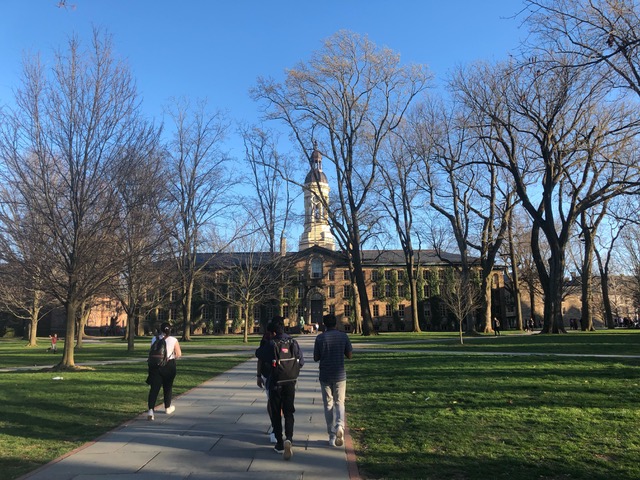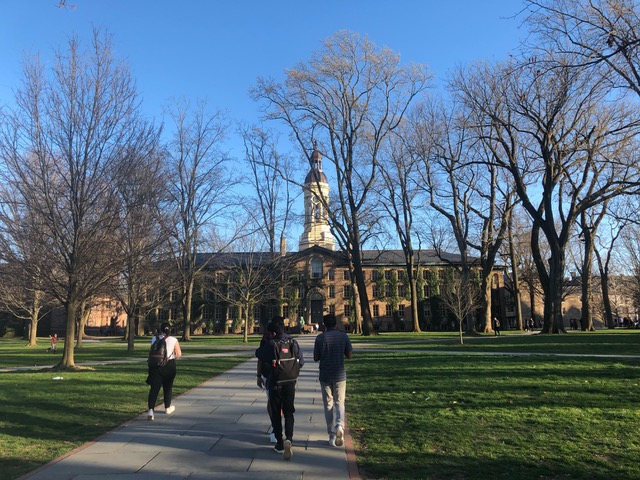2022-2023 Best Colleges Rankings – U.S. News & World Report


U.S. News & World Report recently released its 2022 Colleges Rankings. The Best Colleges rankings includes approximately 1,500 colleges and universities across the U.S. But what do these rankings mean and how are they determined?
According to the report, for the 12th consecutive year, the Best National University is Princeton in New Jersey. MIT comes in second, followed by Harvard, Stanford, and Yale all tied for third. One of the biggest drops this year was Columbia University, moving from number 2 to number 18 amidst an investigation from Columbia math professor, Michael Thaddeus, who accused the university of submitting inaccurate data to boost its rankings. The University of South Florida moved up to No. 97 in the national rankings and continues to be one of the “fastest-rising universities.” The Best National Liberal Arts College is Williams College, followed by Amherst College, both in Massachusetts. UCLA and UC Berkeley tied for the ranking of Top Public School. U.S. News also released other college rankings including Most Innovative, Best Value Schools, and Best Regional Colleges.
To create the 2022 Best Colleges rankings lists, U.S. News gathered data from each college in the spring and summer of this year. However, the ranking factors themselves are snapshots of the recent past, reflecting fall 2021 and earlier.
The delayed nature of the data relating to COVID-19 is why methodology changes were made to this edition, even as campus operations have since returned mostly to normal. This is particularly evident in the revamped treatment of standardized test data, explained below. Based on the total score they received, schools were ranked against the other schools in their category.
The Ranking Factors
The below measures, and their respective weights, were used to score the colleges in the ranking formula:
The expert advisors at International College Counselors advise students and parents to use the rankings only as a preliminary guide in making college choices. Rankings remain highly critiqued and controversial. In addition to student outcomes, faculty resources, and an institution’s spending and giving, U.S. News also gave a 20% weight to peer opinions. Critics argue that it’s impossible for anyone to know enough about hundreds of institutions to accurately rank them.
Graduation and retention rates (22%)
Colleges scored top points for having the most students who returned to campus for sophomore year and go on to graduate within six years. This may be the most important indicator as it shows the students selected were a good fit and that the school offers the services and classes that students need to succeed.
Social Mobility (5%)
Those colleges that scored high in the category graduated students who received Pell grants (households earning less than $50,000 annually). The two ranking factors assessing graduation rates of Pell-awarded to students were Pell graduation rates (2.5%) and Pell graduation performance (2.5%).
Graduation Rate Performance (8%)
This is a comparison of a college’s 6-year graduation with what was predicted for the fall 2014 and 2015 incoming classes. Colleges received higher scores if they exceeded expectations. The predicted rates were modeled from its students’ socioeconomic backgrounds, those awarded Pell Grants and who were first in their families to attend college, as well as admissions data, school financial resources, and National Universities’ math and science orientations.
Undergraduate Academic Reputation (20%)
This was based on a peer assessment survey. Top academics including presidents, provosts, and deans of admission rated the academic quality of peer institutions with which they are familiar on a scale of 1 to 5. 1,650 academic institutions responded.
Faculty resources (20%)
Data used in this category is based on the 2021-22 academic year. Class size is the highest weighted measure within this category at 8%. The assumption is that in smaller classes, students have more contact with their professors, and the more likely they will learn. Faculty salary counts as 7%, the proportion of professors with the highest degrees in their field counts 3%, the student-faculty ratio is 1%, and the proportion of faculty who are full time is 1%.
Student Selectivity (7%)
This score includes standardized tests and high school class standing. The admissions test scores for all enrollees who took the Math and Evidence-Based Reading and Writing portions of the SAT and the composite ACT is weighted at 5%. The proportion of freshmen who graduated in the top 10% of their classes counts for 2% of the score.
Financial resources (10%)
This counts per-student spending, meaning the average spending per student on instruction, research, student services, and related educational expenditures. Sports, dorms, or hospital spending did not count.
Alumni giving rate (3%)
This reflects the average percentage of living alumni with bachelor’s degrees who gave to their school between 2019 and 2021. This may measure satisfaction and post-graduate engagement.
Graduate Indebtedness (5%)
Students are beginning to weigh the benefits of earning a college degree compared to the affordability of attending the college itself. Graduate indebtedness or the amount of debt, based on the classes of 2020 and 2021 weighed 3%, and graduate indebtedness proportion, or the percentage of students who borrowed federal loans from the classes of 2020 and 2021, weighed 2%. The report also gave credit to those colleges who met full financial aid without loans compared to the colleges who offered loans.
At International College Counselors, we understand that the U.S. News rankings are influential. However, we remind families to use the list as a rough guide. We encourage families to contact us for personalized support and for an unbiased school list of best colleges for your student. Visit us at www.internationalcollegecounselors.com or contact us at 1-954-414-9986.

